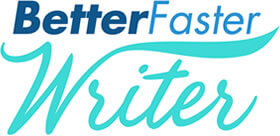I love to cook. In fact, I love to cook so much that I wanted to make this whole post on effective business writing about food and cooking instead. But I didn’t. OK, I started out saying waaaaaay too much about cooking. But then I revised it.
So, no, this post isn’t going to make your mouth water or give you dinner ideas. But it will give you an analogy for effective business writing by pointing out the parallels between the writing you do at work and the cooking you do at home.
Read through the post to see the parallels, and then see if you can “cook up” a new approach to effective business writing as a result!
First off, who are you cooking for?
Your audience is your first consideration when writing, just as you have to consider whom you’re cooking for at mealtime. For household meals, I used to cook for picky eaters, but now the kids are grown and gone and my husband is not picky at all. But if my mother or my oldest is coming over for dinner, I must cook a meatless meal. My husband gets home from work after I’ve gone to bed, so cooking for him on his workdays means making something that can be reheated. When we have friends over, we have friends who don’t do dairy and others who avoid gluten, and I must take that into account when planning the meal.
When you’re writing, you must consider your audience in the same way. Are you writing to someone you’re familiar with, meaning you can use a casual tone? Or is it a customer new to the business who doesn’t quite trust you yet? Is it a colleague who is easily miffed or a pushy vendor? Or if it’s a document to be read by multiple people, who are they and what do they already know/need to know?
What are you preparing?
Think of all the different dishes and meals you might make while cooking: breakfast, brunch, lunch, dinner, appetizer, a main dish, dessert, a casual meal or a fancy one, etc. It’s the same range when it comes to writing at work. You have memos, emails, chat messages, reports, presentations, guides, manuals, sales letters, brochures, case studies, etc. And how you approach each will differ depending on the dish—or document. Breakfast tends to be more casual, and so does chat. Lunch is a little more like email. Dinner can be everything from a letter to the five-course meal equivalent: a report.
Just as each meal should be approached differently, so should each piece of writing. Be mindful of what you’re writing and how to approach it before you start.
Why are you doing this?
I think the “why” is often missing from effective business writing, and maybe making a correlation to cooking will help. When you cook, it’s with a purpose. You’re feeding hungry kids after soccer practice and before homework, or you’re impressing your friends with a gourmet meal, or you’re cooking your spouse’s favorite food because it’s his or her birthday. Or maybe you’re simply scrambling up eggs because you’re tired and hungry and that’s all you have the energy for at the end of a long day. When it comes to cooking, it’s easy to see the “why” behind it.
With effective business writing, it might not be easy but it’s necessary to know why you’re writing what you’re writing. Too many emails are dashed off without a clear purpose. Too many documents are full of words but utterly lacking in substance—like a meal that leaves you hungry. Know why you’re writing what you’re writing and you’ll get a better end result.
Finally, remember to do the dishes!
Cooking leads to a dirty kitchen. There’s no way around that. But the responsible cook makes sure to tackle the kitchen and dishes when the meal is done.
And so it must be with effective business writing. You need to “do the dishes,” which means re-read your email before you send it, revise your writing to make it stronger, and give it one last proofread to check for mistakes.
Now…go cook up some better business writing!


